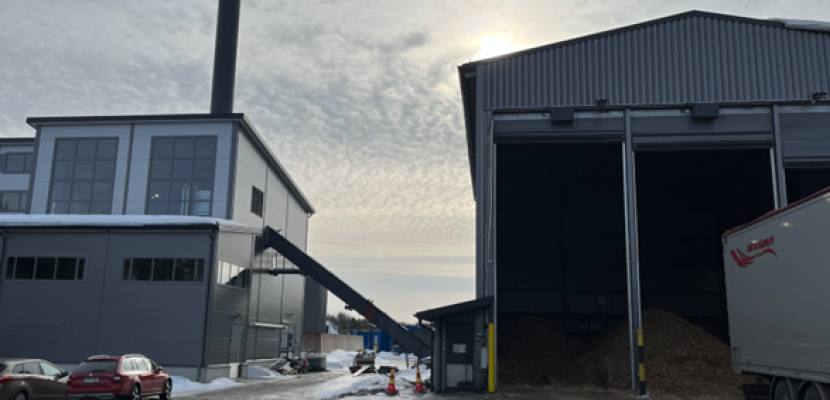
Arppe boiler house renovation cuts emissions and improves energy efficiency of biomass heat

About this good practice
Kiteen Lämpö Oy is a municipal energy company providing annually 40-45 GWh district heat for the town of Kitee in Finland. About 97% of heat energy has been renewable, produced in two biomass heating plants. In 2023 the older biomass heating plant was totally re-built after 36 years of service. The new Arppe heating plant and 5,5 MW grate boiler started test operation in December 2023 and moved to full-scale operation in March 2024. The Kitee district heat network is 24,8 km long connecting 170 heat customers including public buildings like medical centre, library, fire station and offices, business premises, apartment houses and private households.
Arppe renovation significantly improved plant’s energy efficiency and enables profitable use of fresh biomass up to 60% moisture content and benefits in supply-chain caused by remarkable shorter fuel storage times, so called Fresh wood concept. Thus, it enables same energy production from smaller amount of fuel. Adaptation of new technology boosted by the new MCPD directive caused a win-win-win situation: flue gas scrubber and filter investments for reducing flue gas emissions from combustion resulted more energy-efficient district heat production but also to significantly improved material efficiency in biomass supply chain. Old boiler used annually about 11,200 m3 (solid) energy wood, mainly small-sized timber from pre-commercial thinnings. In the future, same energy production is possible with over 20% smaller amount of wood.
Expert opinion
Resources needed
The new heating plant investment in biomass boiler, fuel storages etc. totaled 6,7 M€. Investments to scrubber and dust control equipment covered about 16% of the total investment. New boiler is designed for moist biomass producing nominal 5,5 MW power with 60% moisture content (MC) fuel.
Evidence of success
Measured emissions fall below 3 mg/Nm3, while MCPD directive’s threshold is 30 mg/Nm3 for old biomass plants and 20 mg/Nm3 for new plants. Old boiler’s emissions were slightly over 30 mg/Nm3. In test phase heat recovery from scrubber has exceeded the energy yield by 15-20% depending on the fuel moisture.
Fresh wood concept reduces biomass losses 5-20% already in logistic chain, while short storing means remarkably smaller need for working capital and lower interest rate costs for contractors.
Potential for learning or transfer
Optimal case for investing in scrubber technology and adaptation of fresh wood concept is when designing new biomass heating plant: higher moisture of fuel requires more volume for combustion and flue gas channels. Modifications can be done also for old boilers, but it is more expensive. Using fuel with much bigger moisture content than boiler’s design values can lead to inefficient burning, higher emissions and to lower boiler capacity.
In fuel supply chain, the possibility to use fuels with high MC enables to utilize the benefits of fresh wood concept: smaller material losses in storing and handling, fast rotation, lower need for working capital, reduced storage area, lower interest rate cost etc. This can also open access to cheaper biomass resources like wood bark and other fresh sawmilling residues.
If meeting MCPD emission levels requires investments in existing biomass plant, investments in scrubber technology and moving to fresh wood concept in fuel supply is relevant option.
Further information
Website
Good practice owner
You can contact the good practice owner below for more detailed information.
